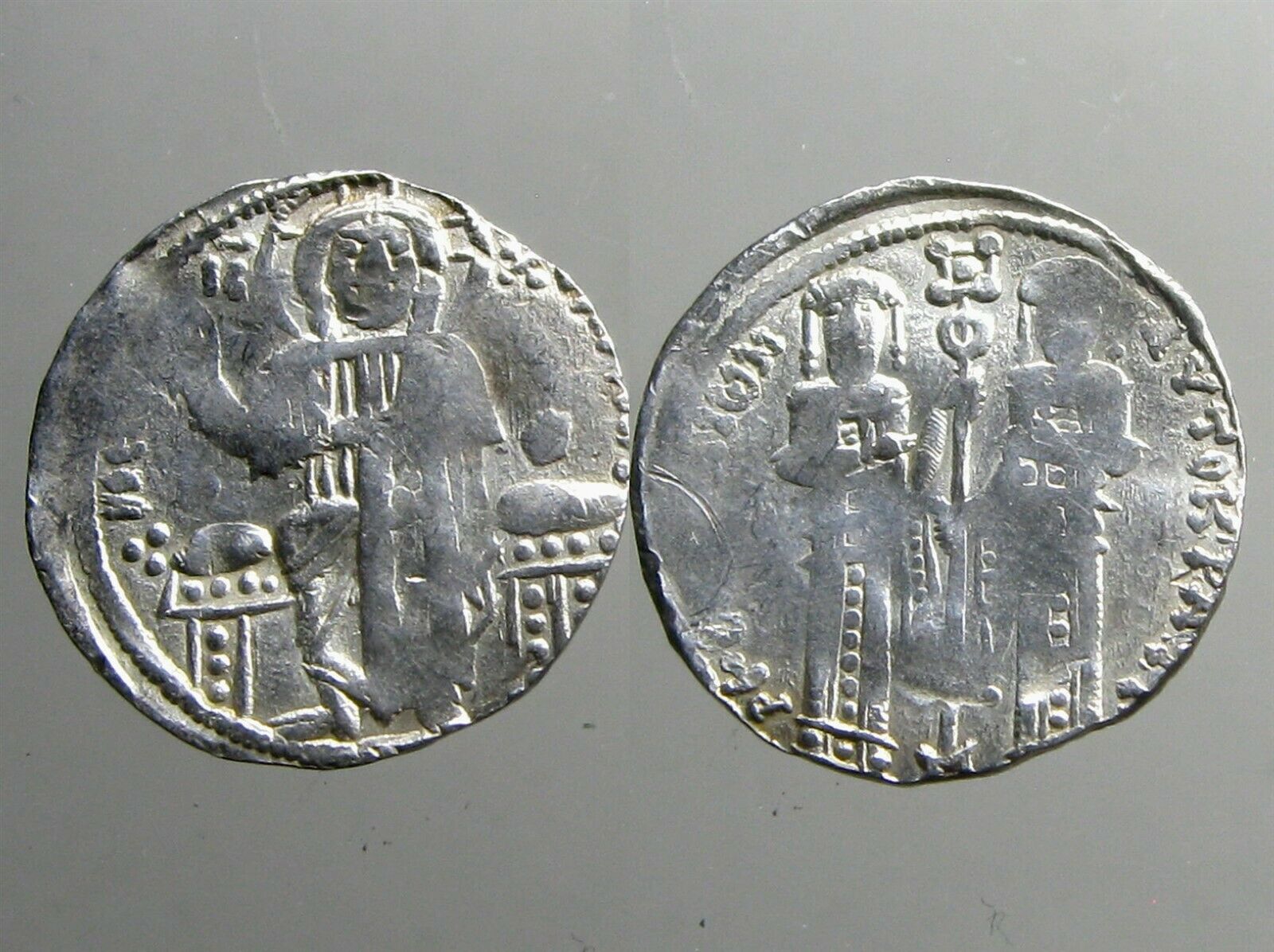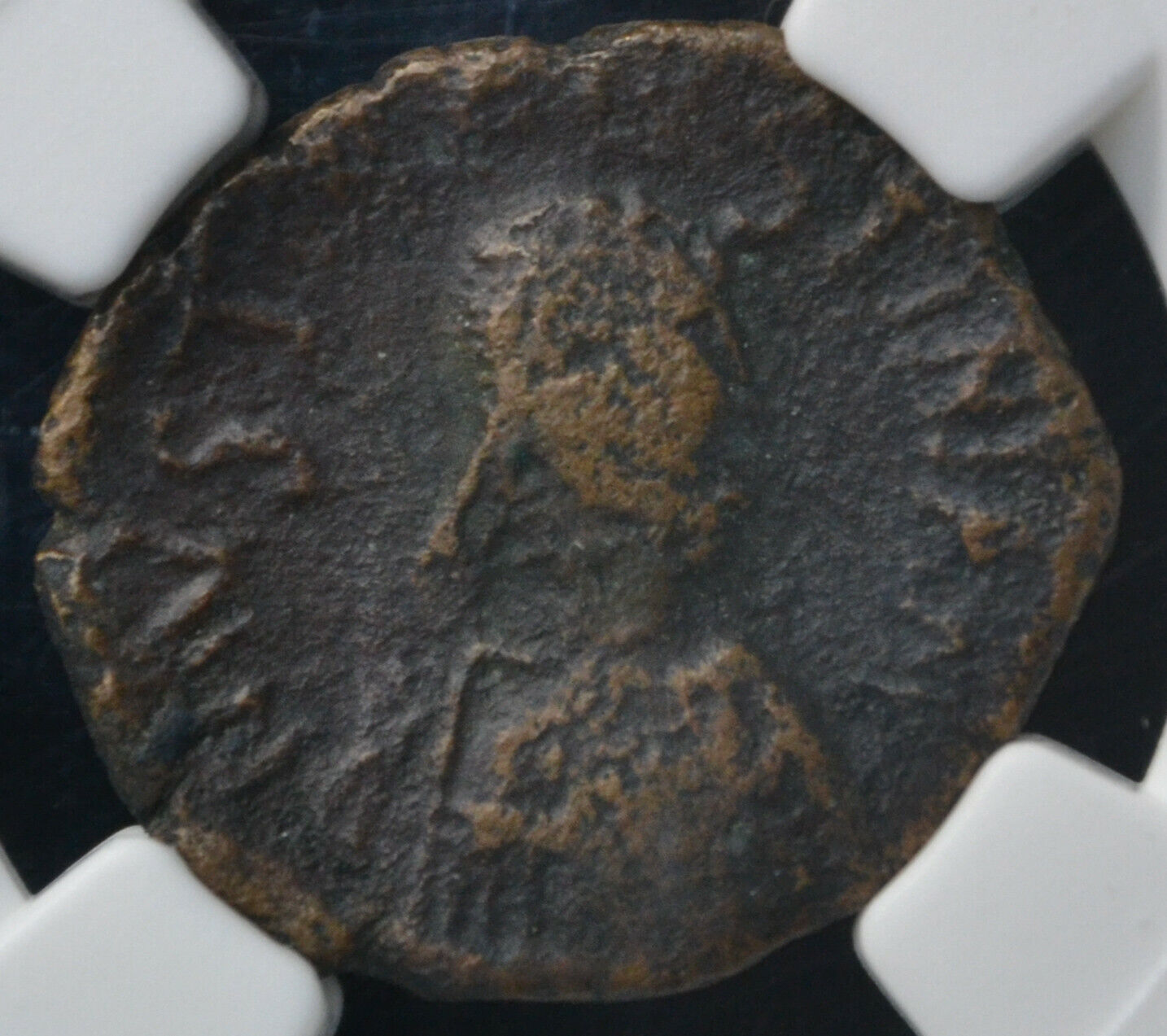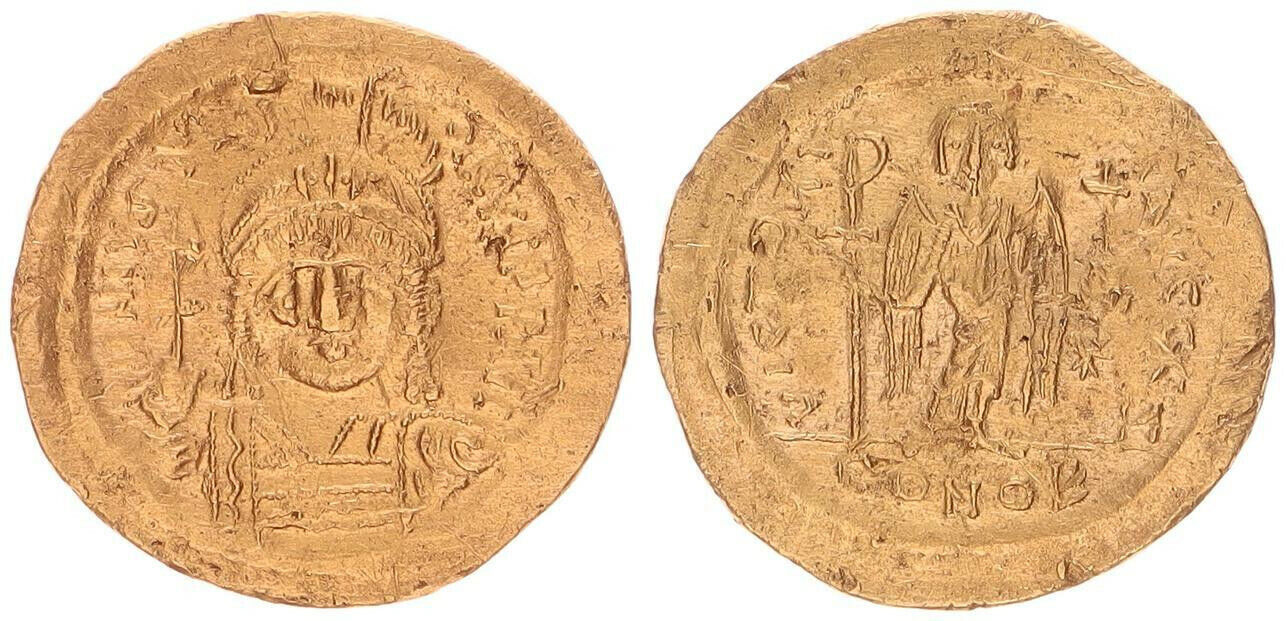-40%
SILVER BASILIKON___Andronicus II & Michael IX___BEHIND BYZANTINE EMPIRE DOWNFALL
$ 19.53
- Description
- Size Guide
Description
19W25FRASCATIUS ANCIENTS
A BEAUTIFUL SILVER BASILIKON OF ANDRONICUS II PALAEOLOGUS & MICHAEL IX PALAEOLOGUS OF THE BYZANTINE EMPIRE FROM 1282 - 1328 AD .
CONSTANTINOPLE MINT
During Andronicus’s reign (1282–1328) the Byzantine Empire declined to the status of a minor state, confined by the Ottoman Turks in Anatolia and the Serbs in the Balkans. Andronicus’s reign was marked by a steady disintegration of centralized authority and increasing economic difficulties.
THE SIZE IS 20.6 MM AND 2.06 GRAMS.
SB 2402
OBVERSE – Christ Pantokrator enthroned facing
REVERSE – Andronicus and Michael standing facing, holding labarum between them
ANDRONIKOS II PALAEOLOGUS
Andronicus II Palaeologus, (born 1260, Constantinople, Byzantine Empire [now Istanbul, Turkey]—died February 13, 1332, Constantinople), Byzantine emperor who was the son of Michael VIII Palaeologus. During Andronicus’s reign (1282–1328) the Byzantine Empire declined to the status of a minor state, confined by the Ottoman Turks in Anatolia and the Serbs in the Balkans.
An intellectual and theologian rather than a statesman or soldier, Andronicus weakened Byzantium by reducing its land forces to a few thousand cavalry and infantry and eliminating the navy altogether, relying solely on a Genoese mercenary fleet. His lack of military initiative enabled the Ottoman Turks to gain control of nearly all of Anatolia by 1300, and his employment of Catalan mercenaries in 1304 ended disastrously, because the Catalans proved more inclined to pillage Byzantine cities than to fight the Turks. In the war between the Italian city-states of Venice and Genoa, Andronicus unwisely took sides, favoring Genoa, and suffered the wrath of the greatly superior Venetian navy.
Internally, Andronicus’s reign was marked by a steady disintegration of centralized authority and increasing economic difficulties, although he did sponsor a revival of Byzantine art and culture and championed the independence of the Eastern Orthodox church. During his reign the great monastery complex at Mount Athos in Greece enjoyed its golden age. In 1328 Andronicus, after quarreling with his grandson—who would become Andronicus III—and excluding him from the succession, was deposed by him and entered a monastery.
MICHAEL IX PALAEOLOGUS
Michael IX Palaeologus, (1277-1320, Thessalonica, Byzantine Empire), Byzantine co-emperor with his father, Andronicus II, from 1295 who, despite his efforts in fighting the Turks and in resisting the encroachments of the Catalan mercenaries, was unable to reverse the decline of the empire.
In 1303, Byzantium employed as mercenaries the Catalan Company, led by Roger de Flor, which soon began attacking and robbing Byzantines and Turks alike. Hoping to get rid of them, Michael arranged the murder of Roger de Flor in the imperial palace in April 1305. The Catalans then rebelled and ravaged the countryside of Thrace for several years before moving on to Thessaly.
Michael died before his father and, thus, never reigned as sole emperor.
BYZANTINE EMPIRE
The Byzantine Empire (or Byzantium) was the predominantly Greek-speaking eastern part of the Roman Empire throughout Late Antiquity and the Middle Ages. Also known as the Eastern Roman Empire, the Byzantine Empire was called simply Roman Empire or Romania by its inhabitants and neighbors. Centered around the capital of Constantinople, it was ruled by emperors in direct succession to the ancient Roman emperors after the collapse of Western Roman Empire.
The Byzantine Empire existed for more than a thousand years (from approximately 306 AD to 1453 AD). During its existence, the Empire remained one of the most powerful economic, cultural, and military forces in Europe, despite setbacks and territorial losses, especially during the Roman–Persian and Byzantine–Arab Wars. The Empire recovered during the Macedonian dynasty, rising again to become a pre-eminent power in the Eastern Mediterranean by the late tenth century, rivaling the Fatimid Caliphate.
A True Auction Environment –
Auctions start at $.99 with No Minimums and No Reserves.
FULL UNCONDITIONAL GUARANTEE OF AUTHENTICITY
If the buyer feels that the coin received is not as represented - just return the coin and the buyer will be fully reimbursed for the cost of the coin; the original shipping charge; and the cost to ship the coin back… No Questions Asked. If the buyer is not happy, please let me know, and I will do what I can to make it right.
NOTE: Frascatius is a life member (LM #6864) of the American Numismatic Association (ANA). Frascatius fully complies with the ANA Member Code of Ethics.
If you have any questions regarding this auction, please click on “Ask seller a question”.
I will be more than happy to provide you with a response.
VISIT MY EBAY STORE: FRASCATIUS ANCIENT COINS
For those new to ancient coins, please contact me, and I will e-mail to you my "Beginners Guide for Ancient Coin Collectors - FAQ".
SHIPPING:
To the U.S. = .00 Insured Flat Rate
International = .50 Insured Flat Rate
Multiple items may be grouped at no additional charge at the above rates.
All items will be carefully packaged, protected & insured (private insurance).
Powered by SixBit's eCommerce Solution










